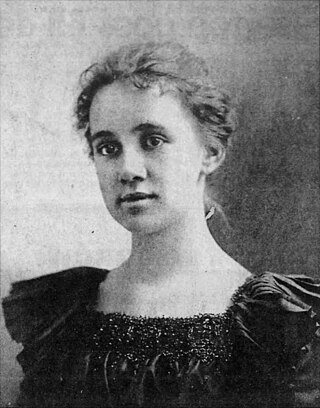
Sarah DeRemer Knauss was an American supercentenarian. She is the oldest person ever from the United States and, on April 16, 1998, became the world's oldest living person. She is the third-oldest verified person ever, living to the age of 119 years and 97 days. Her birthdate has been independently verified through numerous census and other records.
A centenarian is a person who has reached the age of 100 years. Because life expectancies worldwide are below 100, the term is invariably associated with longevity. The United Nations in 2012 estimated that there were 316,600 living centenarians worldwide.

Longevity may refer to especially long-lived members of a population, whereas life expectancy is defined statistically as the average number of years remaining at a given age. For example, a population's life expectancy at birth is the same as the average age at death for all people born in the same year.

Jeanne Louise Calment was a French supercentenarian and, with a documented lifespan of 122 years and 164 days, is the world's oldest verified person. Her longevity attracted media attention and medical studies of her health and lifestyle. She is the only person verified to have reached the age of 120.

Hendrikje van Andel-Schipper was a Dutch supercentenarian who lived to the age of 115 years, 62 days. She is the oldest person ever from the Netherlands, breaking the previous record of Catharina van Dam on 26 September 2003, and from 29 May 2004 was thought to be the oldest verified person in the world. She became the oldest living person in the Netherlands on 16 February 2001, at the age of 110 years and 232 days.

Thomas Peter Thorvald Kristian Ferdinand Mortensen, known as Christian Mortensen, was a Danish supercentenarian who resided in California, United States. When he died, his age of 115 years and 252 days was the longest verified male lifespan at the time, until Jiroemon Kimura surpassed him in 2012. Mortensen was baptized in Fruering Church on December 26, 1882. Besides his baptismal record, other records include the 1890 and 1901 census enumerations in Denmark, and church confirmation in 1896.
Longevity claims are unsubstantiated cases of asserted human longevity. Those asserting lifespans of 110 years or more are referred to as supercentenarians. Many have either no official verification or are backed only by partial evidence. Cases where longevity has been fully verified, according to modern standards of longevity research, are reflected in an established list of supercentenarians based on the work of organizations such as the Gerontology Research Group (GRG) or Guinness World Records. This article lists living claims greater than that of the oldest living person whose age has been independently verified, American-born Spanish woman Maria Branyas, aged 117 years, 48 days, and deceased claims greater than that of the oldest person ever whose age has been verified, French woman Jeanne Calment, who died aged 122 years and 164 days. The upper limit for both lists is 130 years.
This is a list of tables of the oldest people in the world in ordinal ranks. To avoid including false or unconfirmed claims of old age, names here are restricted to those people whose ages have been validated by an international body dealing in longevity research, such as the Gerontology Research Group or Guinness World Records, and others who have otherwise been reliably sourced.

The Gerontology Research Group (GRG) based in Los Angeles, California, USA, is a global non-profit scientific organization of researchers in various fields of gerontology, primarily concerned with validating the ages of, recording and researching supercentenarians.

Miriam Sparks Bannister née Voisey was an English woman, who was one of the earliest recognized supercentenarians.
The New England Centenarian Study is a study of persons aged 100 and over (centenarians) in the Boston area.
Jean-Marie Robine is a French social scientist, who works in the field of demography and gerontology, and is an author and journalist, who is best known as being the co-validator of the longevity of Jeanne Calment, the oldest verified supercentenarian of all time, with whom he collaborated.
A centenarian is a person who has attained the age of 100 years or more. Research on centenarians has become more common with clinical and general population studies now having been conducted in France, Hungary, Japan, Italy, Finland, Denmark, the United States, and China. Centenarians are the second fastest-growing demographic in much of the developed world. By 2030, it is expected that there will be around a million centenarians worldwide. In the United States, a 2010 Census Bureau report found that more than 80 percent of centenarians are women.
This timeline lists notable events in the history of research into senescence or biological aging, including the research and development of life extension methods, brain aging delay methods and rejuvenation.








